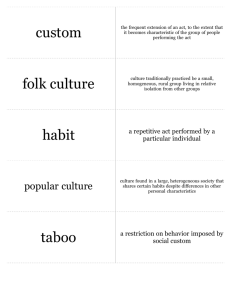Lesson Plan 2: Logographic vs. Alphabetic Writing Systems
advertisement
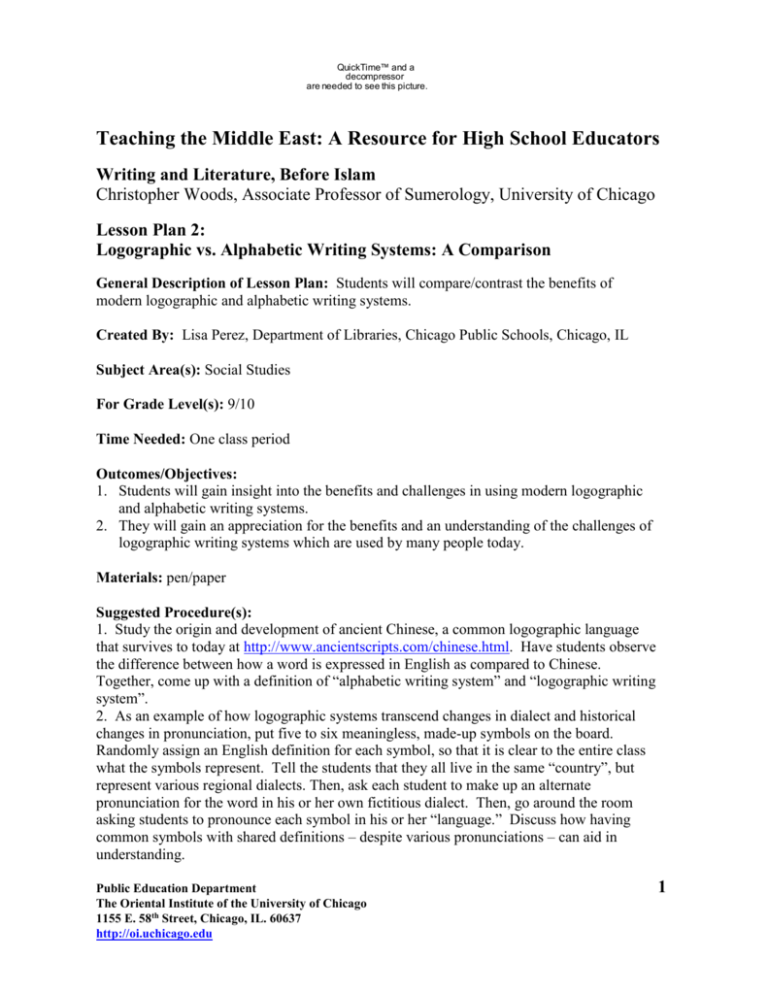
QuickTime™ and a decompressor are needed to see this picture. Teaching the Middle East: A Resource for High School Educators Writing and Literature, Before Islam Christopher Woods, Associate Professor of Sumerology, University of Chicago Lesson Plan 2: Logographic vs. Alphabetic Writing Systems: A Comparison General Description of Lesson Plan: Students will compare/contrast the benefits of modern logographic and alphabetic writing systems. Created By: Lisa Perez, Department of Libraries, Chicago Public Schools, Chicago, IL Subject Area(s): Social Studies For Grade Level(s): 9/10 Time Needed: One class period Outcomes/Objectives: 1. Students will gain insight into the benefits and challenges in using modern logographic and alphabetic writing systems. 2. They will gain an appreciation for the benefits and an understanding of the challenges of logographic writing systems which are used by many people today. Materials: pen/paper Suggested Procedure(s): 1. Study the origin and development of ancient Chinese, a common logographic language that survives to today at http://www.ancientscripts.com/chinese.html. Have students observe the difference between how a word is expressed in English as compared to Chinese. Together, come up with a definition of “alphabetic writing system” and “logographic writing system”. 2. As an example of how logographic systems transcend changes in dialect and historical changes in pronunciation, put five to six meaningless, made-up symbols on the board. Randomly assign an English definition for each symbol, so that it is clear to the entire class what the symbols represent. Tell the students that they all live in the same “country”, but represent various regional dialects. Then, ask each student to make up an alternate pronunciation for the word in his or her own fictitious dialect. Then, go around the room asking students to pronounce each symbol in his or her “language.” Discuss how having common symbols with shared definitions – despite various pronunciations – can aid in understanding. Public Education Department The Oriental Institute of the University of Chicago 1155 E. 58th Street, Chicago, IL. 60637 http://oi.uchicago.edu 1 Teaching the Middle East: A Resource for High School Educators Lesson Plan 2: Logographic vs. Alphabetic Writing Systems: A Comparison 3. As a group compare and contrast the benefits and challenges of using a logographic versus an alphabetic writing system. Discuss why certain civilizations might have decided to develop the alphabetic system and how that affects the way we communicate today. Realize that other cultures communicate with a logographic system and what the implications are for education and literacy for native speakers and those who are studying the languages as nonnative speakers. 4. Conclude by having each student write a short opinion statement sharing which system he or she prefers and why. Evaluation Rubric: Making A Game : Logographic vs. Alphabetic Writing Systems Teacher Name: : Student Name: ________________________________________________________________________ ________________________________________________________________________ CATEGORY Participation - Dialect 3 Student understands the purpose of and fully participates in the fictitious dialect activity. 2 Student partially understands the purpose of and fully participates in the fictitious dialect activity. 1 Student attempts to understand the purpose of and partially participates in the fictitious dialect activity. 0 Student does not understand the purpose of or participate in the fictitious dialect activity. Comparison/Contrast Student understands the purpose of and fully participates in the comparison/contrast activity. Student partially understands the purpose of and fully participates in the comparison/contrast activity. Student attempts to understand the purpose of and partially participates in the comparison/contrast activity. Student does not understand the purpose of or participate in the comparison/contrast activity. Opinion Statement Student writes an opinion statement that provides at least three supporting reasons, based on the class discussion, sharing why he or she prefers one writing system. Student writes an opinion statement that provides at least two supporting reasons, based on the class discussion, sharing why he or she prefers one writing system. Student writes an opinion statement that provides at least one supporting reason, based on the class discussion, sharing why he or she prefers one writing system. Student does not write an opinion statement that provides any supporting reasons, based on the class discussion, sharing why he or she prefers one writing system. Use these guiding questions to spur discussion in your classroom: 1. What are the advantages and disadvantages of using logographic writing systems? 2. What are the advantages and disadvantages of using alphabetic writing systems? 3. What are the implications for Westerners in trying to learn modern logographic writing systems, such as Chinese or Japanese? Public Education Department The Oriental Institute of the University of Chicago 1155 E. 58th Street, Chicago, IL. 60637 http://oi.uchicago.edu 2

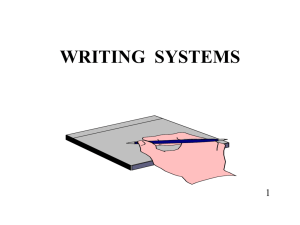

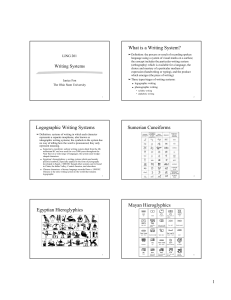
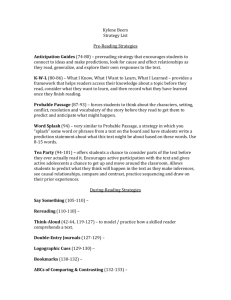
![9[1].2 writing](http://s2.studylib.net/store/data/005278717_1-023577bc235a9be149b22ce8152e1c6d-300x300.png)
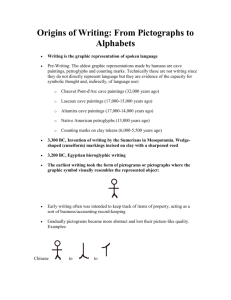
![9[1]. writing](http://s3.studylib.net/store/data/008340923_1-ef62319fe988d6b873b5f7e896611b3b-300x300.png)
